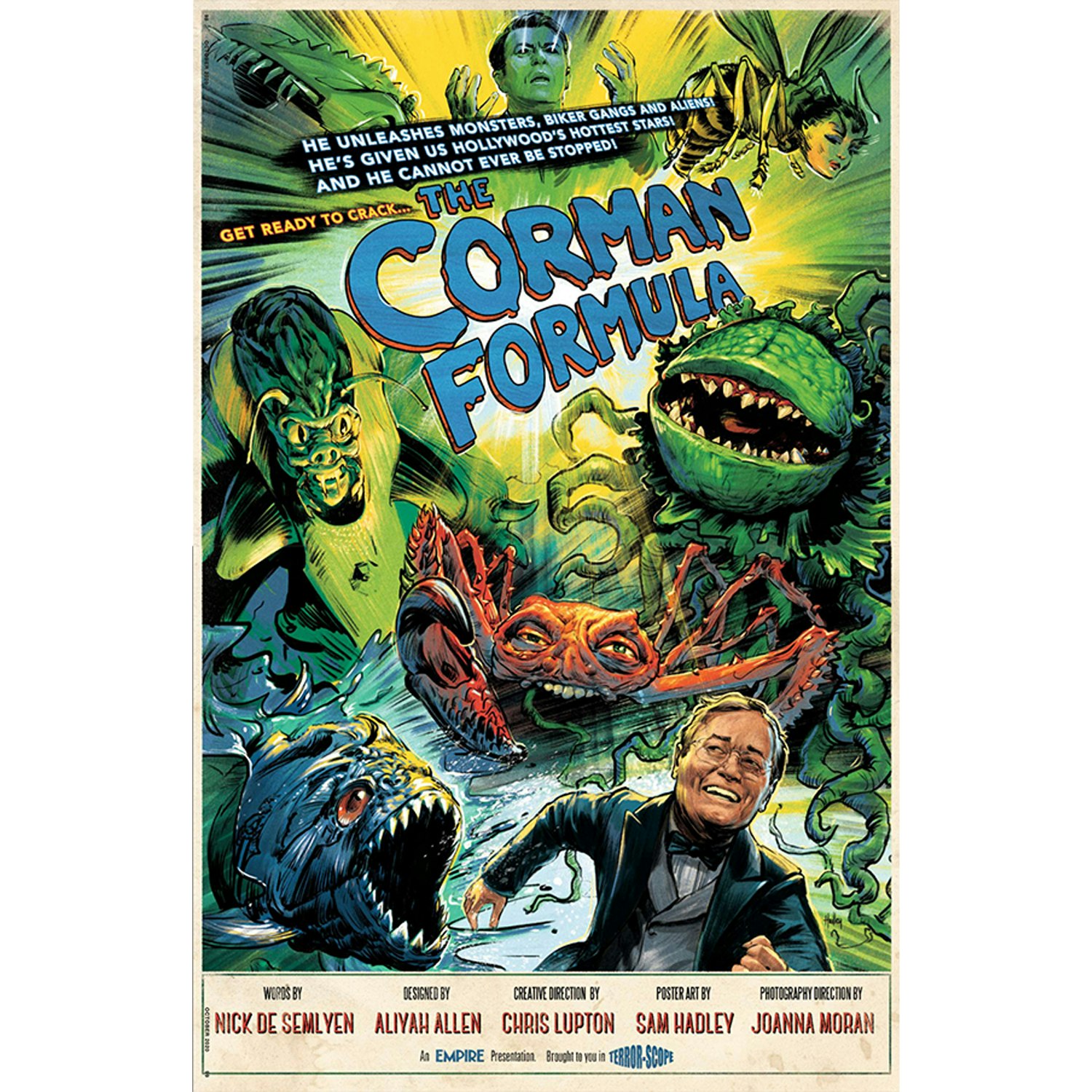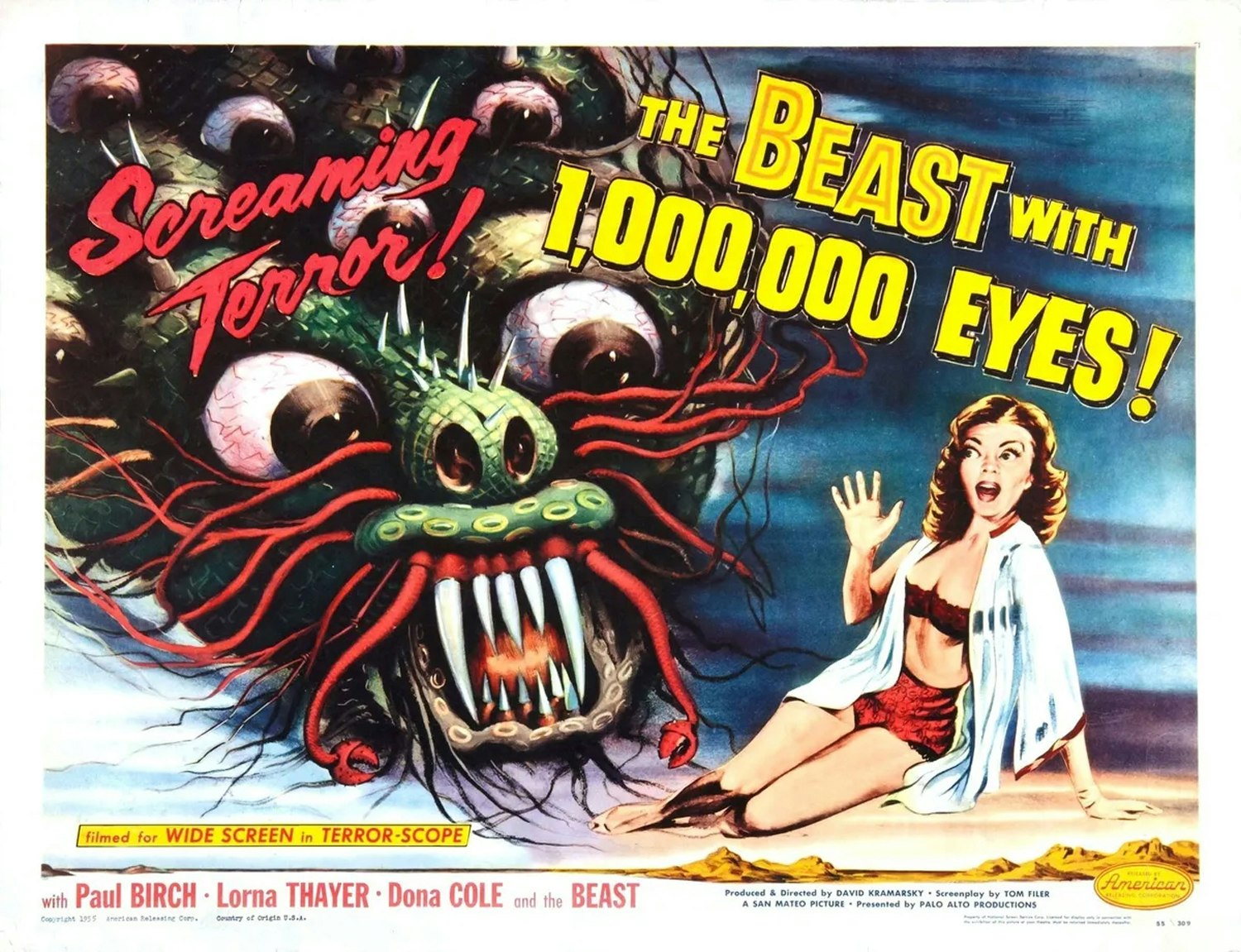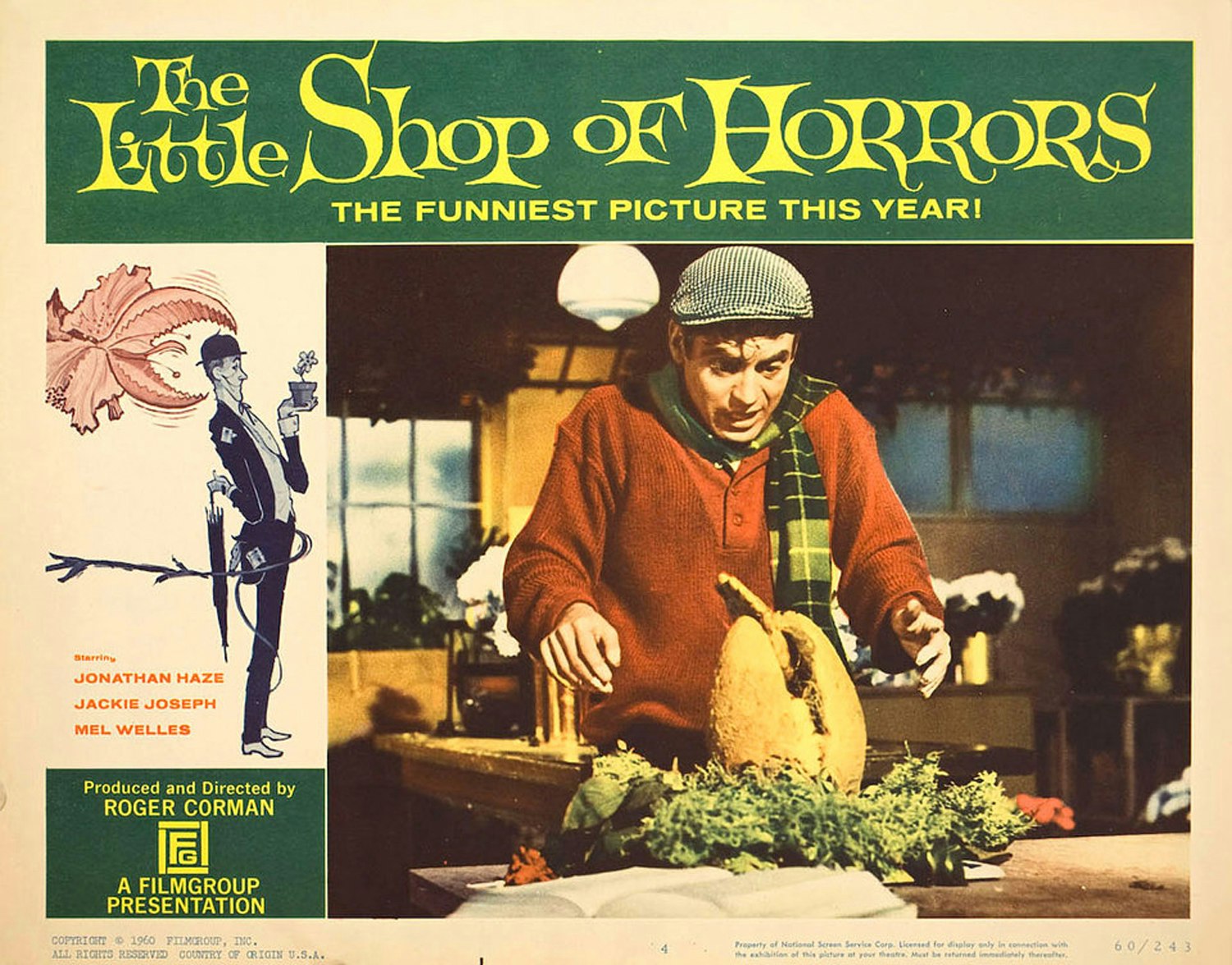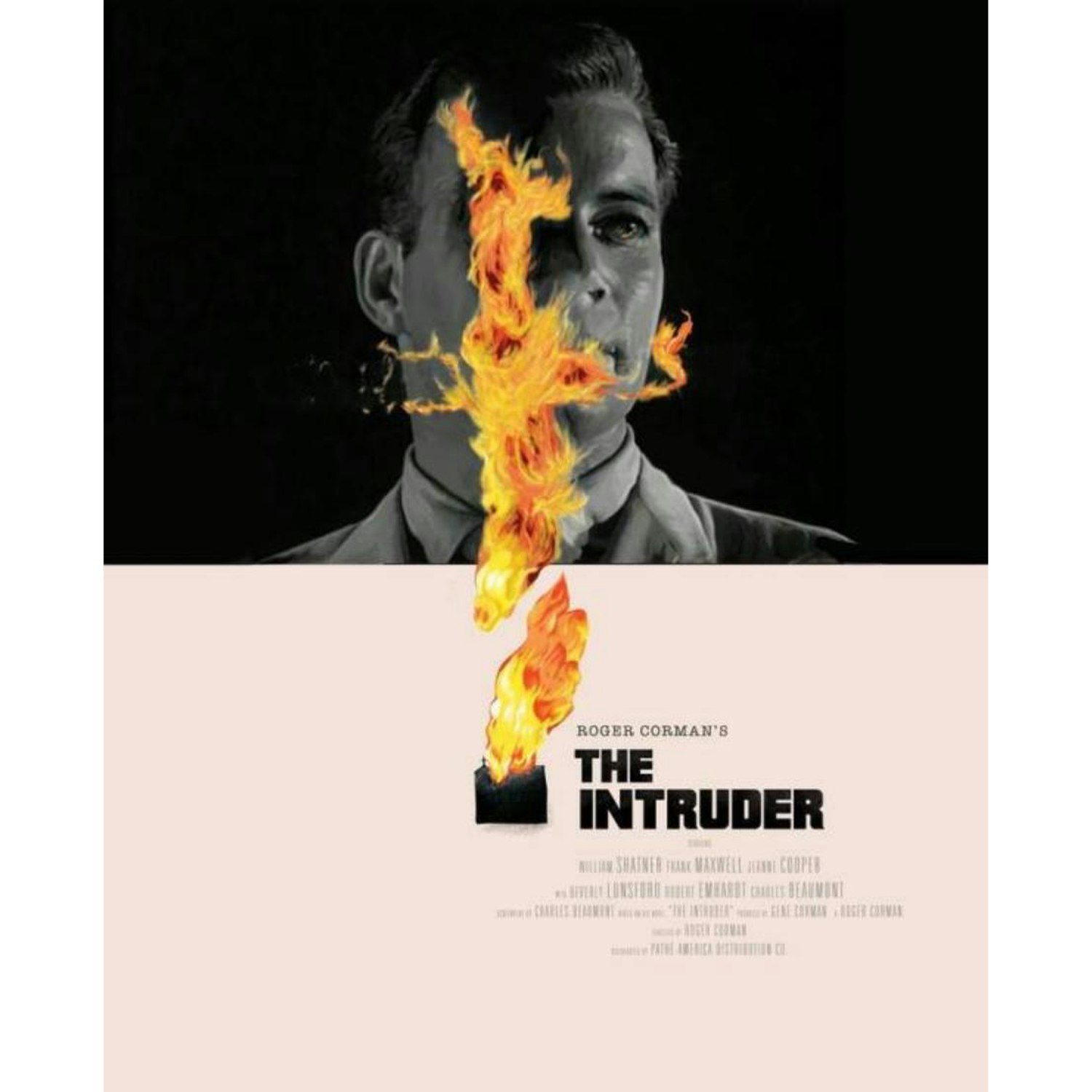Roger Corman’s Six Vital Rules For Making Movie Mayhem
This article was originally published in Empire in October 2020 There’s never...

This article was originally published in Empire in October 2020
There’s never been a filmmaker like Roger Corman – putting some of the wildest premises in Hollywood history onto the screen, igniting the careers of countless fellow cinematic legends, and continuing to create against all the odds. Following his death at the age of 98, Empire presents our 2020 interview with the man himself – looking back on his wildest career moves, sharing his vital rules for making movies, and detailing the projects he still had in the works. Because even in his 90s, Corman was giving his all to cinema.

No force on Earth has ever been able to stop Roger Corman. From the moment he bankrolled his first film, Monster From The Ocean Floor, back in 1954, he has worked at a velocity that makes even Ben Wheatley look like Stanley Kubrick. Churning out one low-budget genre flick after another, he’s given the world films with such glorious titles as The Beast With A Million Eyes, Teenage Cave Man and Attack Of The Crab Monsters. Along the way there have been clashes with Hells Angels, fights with studios, death threats from white supremacists, and one occasion where he had to defuse an argument between a gun-toting director and a sword-wielding David Carradine. But through it all, he’s kept bouncing from one project to another — usually several simultaneously. His credits list on IMDb might take you longer to read than War And Peace.
The coronavirus, then, never had a chance of slowing him down. When the 94-year-old Hollywood veteran, who is revered by the likes of Martin Scorsese, Jack Nicholson and Quentin Tarantino, speaks to Empire from his Santa Monica abode, he’s not taking a break from reading, or watching daytime TV, but from chipping away at three projects he’s still hoping to get off the ground. “I’ve got a desk set up at a window which looks out over the swimming pool and to the mountains beyond,” he says. “And I’m actually getting a fair amount done, because unlike at the office where people are constantly coming in with problems, I can simply sit here and work.”
Corman’s is a totally unique Hollywood career, wildly prolific, crammed with drama, and boasting cameos from some of the industry’s biggest names. There truly is no-one quite like him. Here, then, are Roger’s rules, a code for success that has served him well over seven decades. Crab monsters optional.
———
RULE 1: If you have a motorcycle, blow it up

Corman’s budgets have long been as tiny as his visions are big. When he made The Beast With A Million Eyes back in 1955, for instance, the $50 he had for creature design only stretched to about a dozen eyes. But he is the master of wringing maximum production value out of the most threadbare of resources. On one of his many auto-mayhem pictures, he famously decreed that if a motorbike went off the road, it had to combust.
“Yeah, if it crashes it has to explode, and it has to explode into flames,” Corman confirms. “I just thought, ‘Any crash, we’re going to get double mileage out of it: the excitement of the crash, and then it blowing up. We’ll get a second chill for the audience.’”
An old Hollywood joke goes that Corman could make a deal for a film on a pay phone, pay for it with the money he finds in the change slot, then shoot the film in the phone booth. Or maybe it isn’t a joke. Death Race 2000 only cost around $300,000, yet is so crammed with carnage that it works out at about a death a dollar. James Cameron, working in the model shop on Battle Beyond The Stars and inspired by his boss’ ingenuity, created futuristic-looking walls by gluing spray-painted McDonald’s take-out trays onto them. But occasionally Corman’s penchant for saving a buck could land him in trouble. Like during the $600,000, 28-day shoot for Jaws rip-off Piranha, when he decided not to go to sea like Spielberg’s film, but to shoot the killer-fish attacks in the University Of Southern California’s swimming pool.
“We rented that and filled it with all kinds of goo from the piranhas, blood and so forth,” he recalls. “Then we got a bill from USC to clean up the pool, and the indication was, without saying it: ‘Just pay this bill, there’ll be no problems, but don’t ever come back to this pool again.’”
RULE 2: Sit down

Most producers look to employ people who already have heat. But Corman has, from the beginning, given opportunities to anyone enthusiastic, however raw. Jack Nicholson is one beneficiary of this — he has said that Corman “was the only guy who’d hire me for about ten years”. Another is Sylvester Stallone, who Corman cast as a vehicular maniac in 1975’s Death Race 2000 when the future star was a nobody. The two bonded over their shared love of Edgar Allan Poe, and Corman let Stallone rework his dialogue for the film, over the protestations of the director; “I said, ‘Sly, you’re really writing some good lines in there,’” Corman recalls. “He said, ‘I’m working on an original script also. It’s called Rocky.’” An unknown Robert De Niro got his first Hollywood film role in 1970’s Bloody Mama, while Pam Grier’s first starring part was in women-in-prison schlockfest The Big Doll House.
But it’s the directors Corman has launched that have really changed the landscape of Hollywood. As well as James Cameron (who created a spaceship with breasts for Battle Beyond The Stars), there’s Martin Scorsese (who as a boy thrilled to Corman’s She Gods Of Shark Reef, before being hired by him, aged 28, for Boxcar Bertha), Francis Ford Coppola, Joe Dante, Ron Howard, Jonathan Demme and Peter Bogdanovich. Once they graduated from the Corman academy, a place where the budgets are tiny, the takes few and the pace rocket-fast, they went on to bigger projects, often giving Corman a cameo (see sidebar) as a way to say thank you.
“First and foremost, I looked for creativity,” he says now of identifying future Oscar-winners. “A number of them shot second unit for me, and I was able to see how good they were. The other thing I looked for was the ability to work long, hard hours. It became a running joke with the first-time directors. I would tell them, ‘Remember, this is really hard, exhausting work. Make sure you have a name with your chair on it, and sit down between shots.’ Allan Arkush, who went on to become a very good TV director, forgot to write that down and collapsed with exhaustion on his first day; Joe Dante had to come in and shoot in the afternoon.”
RULE 3: Recycle everything

As evidenced by his countless remakes of his own films, if something works, you can bet that Corman will do it again. He’s even put footage from one movie into another: when sneak previews of Cockfighter went poorly in 1974, he ordered scenes from Dynamite Women and Night Call Nurses to be spliced in to spice things up.
This has extended to scenery too. His version of The Little Shop Of Horrors (1960), starring Jack Nicholson as a loony dental patient, came about when he spotted a set built for another movie lying vacant. “They were going to be tearing it down when the next picture came in,” he says. “And I said, ‘If you leave it up, I can have a script written in a couple of weeks and I can go in there and shoot in a couple of days.’ They said yes, and that’s what we did. I hired the actors for a week, we rehearsed Monday, Tuesday and Wednesday, and then we shot the picture on Thursday and Friday. Little Shop Of Horrors has a warm spot in my heart.”
Just as opportunistic, but less creatively successful, was The Terror, a Gothic chiller also starring Nicholson, of which the star has said, “It’s the only film that I know of that has no storyline that you can follow.” Corman admits he’s not wrong. “The picture actually makes no sense whatsoever,” he says. “It was only shot because it rained on a Sunday while I was making The Raven, and I got the idea that I could take advantage of this rather impressive set we had. We wrote it in a week. My ace assistant, Francis Coppola, shot a couple of days, then we shut down until we got some more money, then Jack Hill shot a few days, Monte Hellman shot a few days, and on the last day of shooting Jack Nicholson came to me and said, ‘Roger, every idiot in town has directed part of this film. Let me direct the last day.’ I said, ‘Why not, Jack? You can direct.’”
RULE 4: If the script calls for it, take drugs

Corman is a hands-on filmmaker, who pours his heart and soul into even the pulpiest of premises. This was the case when he was churning out horror B-pics and creature features in the 1950s, and it was the case when he turned his hand to counterculture movies in the ’60s. As prep for The Wild Angels, he hung out with Hells Angels at their wild biker parties, handing around spliffs and once almost getting in a fistfight for talking to the wrong woman. And when he saw a gap in the market for a movie about LSD, 1967’s The Trip, he decided it was only proper to ingest some acid himself.
“I had a wonderful trip; everything was spectacular about it,” he says. “I knew Jack [Nicholson], who was writing the script, had taken LSD. I knew Peter Fonda, playing the lead, had taken LSD. And Dennis Hopper, the co-star, had taken LSD. So I thought I, as a conscientious director, had really better do this myself. Because I was the straightest guy in a fairly wild group, there was a parade of cars driving up to Big Sur with me. I went to this beautiful place on the beach, took the sugar-cube, and then fell down and spent the whole trip with my face in the ground. I never saw any of the beauty I expected to see, but I had a great time.”
RULE 5: Get serious (occasionally)

The seemingly endless parade of lurid posters for Corman joints have taglines that include “SEE STEWARDESSES BATTLE KUNG FU KILLERS!” (1973’s Fly Me) and “MAD DOGS FROM HELL! HUNTING DOWN THEIR PREY WITH A QUARTER-TON OF HOT STEEL BETWEEN THEIR LEGS!” (1969’s Naked Angels). This might suggest that Corman does not spend a lot of time pondering subtext. However, in-between the rubber monsters and machete battles can be found some surprisingly weighty material.
Peter Bogdanovich’s Targets was released over 50 years ago, but has found a resurgence in the zeitgeist of late, thanks to its hot-button subject of shooting sprees in America. “It had to do with both fictional violence and real violence,” says Corman. “Unfortunately, after Paramount bought the film, there was a shooting from a tower at the University of Texas campus, so they got worried and gave it only a limited release.”
He only produced that one, but directed The Intruder, a 1962 drama about a racist rabble-rouser (played by William Shatner) who stirs up hatred towards Black people in a small Southern town. Shot on location in Missouri, the production itself was fraught with drama, once real-life racists figured out what it was about. “We were run out of two towns by the sheriff, but we moved to other towns and it came together alright,” Corman recalls. “I remember one of the New York papers said, ‘The Intruder is a major credit to the entire American film industry,’ but that was the only film I ever made that lost money.”
Corman is saddened that things in his country don’t seem to have moved on much: “We’re seeing it all erupt right now.” And both the villain of The Intruder and ‘Mr President’ in Death Race 2000 have inadvertent parallels with the current POTUS. “I’m very heavily against Trump, and you could easily say that there’s a connection,” the filmmaker says of the latter. A new update of Death Race 2000 is even set to flip the dynamic of Trump’s “Build a wall” rhetoric. “It takes place in a future where the Death Games are a race to the Mexican border, and if they can get through they are allowed amnesty to remain in Mexico.”
RULE 6: Never, ever, ever stop

He’s slowed down, as one tends to when one when gets close to triple-digits. “I stopped directing many years ago [30 years ago, in fact, with 1990’s Frankenstein Unbound], because I have a bad back and various illnesses, and concentrated on producing,” he says. But it became clear a while ago that retirement just isn’t an option.
The three projects on his current to-do list are Crime City (an action movie set on a hurricane-ravaged Bahamian island), The Unborn (a remake of his psychological horror of the same name), and Death Games (that update of Death Race 2000). And in fact, he suddenly remembers a fourth: only days ago, he got an email from Bogdanovich suggesting they shoot a remake of Saint Jack, their film about an American hustler in Singapore, in the Philippines. Corman dutifully added it to the list. “It’s going reasonably well,” he says of his day’s work so far. “Fortunately, I still have the same drive.”
He even mounted a virtual Corman Quarantine Film Festival back in April, hoping to help discover new talent. One thing’s for sure: he’ll continue to live on, through the work he’s made, the people he’s nurtured, the nods in other people’s films (watch out for the poster for The Young Racers in the diner in Pulp Fiction), and, if it ever comes together, through the biopic that Joe Dante continues to try to make about his mentor and hero. Titled The Man With The Kaleidoscope Eyes, and focused on Corman’s experiences making The Trip, it found an audience of sorts in 2016.
“To try to get the financing, Joe decided to have a reading of it at a theatre in Hollywood and charge money,” Corman remembers. “At that time Bill Hader was going to play me. I said, ‘Joe, I think it’s a great idea, but I don’t think anybody’s going to want to go to a theatre and just see a group of actors on stage reading a script.’ To my great surprise, the theatre was filled and there was a line around the block just to go in.”
It really shouldn’t have been a surprise. Corman’s life has, after all, been every bit as wild and improbable as that of his Beast With A Million Eyes. And he’s lasted a lot longer.
What's Your Reaction?























